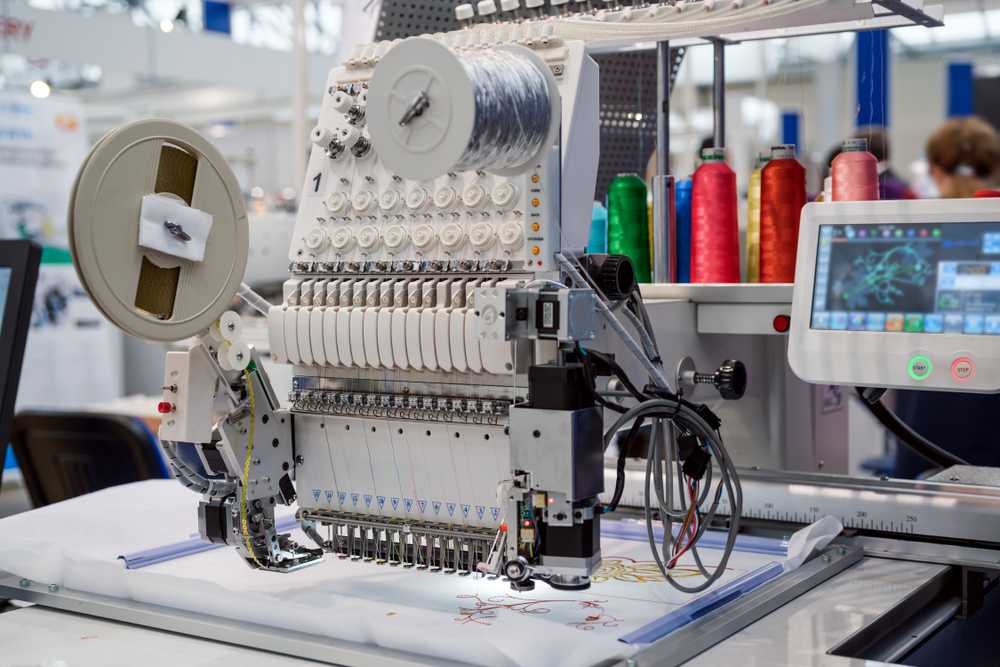Dependable Digitizing for Embroidery: Trusted by Professionals
Dependable Digitizing for Embroidery: Trusted by Professionals
Blog Article
Understanding the Embroidery Digitizing Refine: Your Ultimate Overview
Embroidery digitizing is a precise craft that needs accuracy and expertise to translate elaborate styles into digital layouts for machine embroidery. As artisans embark on this journey to grasp the needlework digitizing procedure, a thorough understanding of the basics establishes the foundation for quality.

Comprehending Embroidery Digitizing Basics
Embroidery digitizing essentials create the structure whereupon complex layouts are converted right into machine-readable styles for specific sewing. This first action in the needlework digitizing procedure is critical for making certain that the last stitched item is a devoted representation of the original design. Recognizing needlework digitizing essentials entails comprehending crucial ideas such as stitch types, stitch direction, thickness, rug, and pull compensation.
Stitch kinds play a crucial duty in identifying the visual and textural result of the stitched style. By selecting the ideal stitch kind, whether it be satin, fill, or running stitch, digitizers can accomplish the desired result and improve the overall top quality of the embroidery. Additionally, sew instructions influences the circulation and measurement of the design, while thickness establishes the spacing and protection of the stitches.
Additionally, padding sewing offers security to the layout by securing the material and avoiding distortion throughout the embroidery procedure. Pull compensation is one more necessary consideration to neutralize the all-natural tendency of material to contract when stitched. Understanding these embroidery digitizing essentials is essential for developing professional-quality embroidered items.
Selecting the Right Digitizing Software Program
Picking the suitable digitizing software program is a crucial choice that significantly influences the performance and high quality of the needlework digitizing procedure. Digitizing for Embroidery. When picking the right digitizing software, it is vital to consider factors such as the complexity of styles you prepare to produce, the user-friendliness of the software program, the degree of client assistance supplied, and the compatibility with your needlework equipment
There are various digitizing software options available on the market, ranging from fundamental programs for novices to sophisticated software application for specialist digitizers. Some prominent selections consist of Wilcom EmbroideryStudio, Hatch Needlework Software Application, and PulseID. These software use a vast array of devices and functions to help you create intricate designs easily.
Prior to choosing, it is a good idea to check out the different software application options through free tests or trials to establish which one ideal matches your demands. In addition, checking out evaluations and seeking suggestions from experienced digitizers can give useful insights right into the toughness and weaknesses of each software (Digitizing for Embroidery). By carefully reviewing your demands and comparing the attributes of different digitizing software application, you can make an informed selection that improves your needlework digitizing workflow
Digitizing Devices and Methods

Optimizing Style Settings for Embroidery
Mastering the complexities of layout settings is basic in achieving ideal results in the needlework digitizing procedure, building upon the read this post here structure laid by understanding digitizing devices and techniques. When enhancing layout settings for needlework, it is important to consider elements such as stitch kind, thickness, underlay, pull settlement, and registration. Enrollment settings line up various components of the style properly, maintaining general layout stability.

Troubleshooting Common Digitizing Issues
When encountering typical digitizing problems throughout the embroidery procedure, it is essential to comprehend the root triggers and apply efficient options promptly. One usual problem is stitch density concerns, where check this stitches may be as well thick, causing the material to tighten, or too sporadic, bring about gaps in the style. Readjusting the stitch density settings in the digitizing software application can aid resolve this problem.
An additional frequent difficulty is string breaks throughout the needlework procedure. This can happen as a result of various reasons such as wrong stress settings, dull needles, or utilizing low-grade thread. Making certain correct upkeep of the needlework equipment, consisting of routine needle changes and stress changes, can decrease the incident of string breaks.
Additionally, style enrollment mistakes can cause misaligned components within the needlework layout. Examining the layout placement in the digitizing software and making necessary adjustments before sewing can aid in preventing this concern. By resolving these usual digitizing problems immediately and successfully, you can make certain a smoother needlework process and high-grade ended up items.
Final Thought
Finally, mastering the embroidery digitizing procedure calls for a strong understanding of the fundamentals, the best find out here now choice of software, and expertise of devices and methods. Optimizing design setups and fixing typical digitizing issues are essential action in ensuring top quality embroidery results. By following these actions carefully, one can accomplish precision and performance in the digitizing procedure.
Report this page